Wool is the most famous historic cloth, used for centuries in Siberia, Ancient Peru, and Egypt as a double session cloth that can be used comfortably in summers and winters. The use of wool is more than 10,000 years old.
In those old times, when there was no machinery and the world was free of chemicals, the use of wool makes sense; perhaps that was the only choice and available cloth. Due to limited resources and no artificial substances, people could not make any other fabric. Moreover, sheep were used for basic human needs like food, clothing, and shelter.
Now here is the question, is merino wool ethical or not? The use of wool in 100 BC wouldn’t have been a problem, but these days, many people are concerned about its use as a fabric in this developed world.
And their question is quite noticeable as in 21st where the industry is in the most advanced stage we are still using the animal for getting wool. People are more concerned about the environment, sustainability of the planet, and animals.
So what do you think about the journey of baa black sheep to baa Bitter reality of wool? Sadly the answer isn’t as straightforward as we love to listen.
Table of Contents
A Short History of Wool and Sheep:
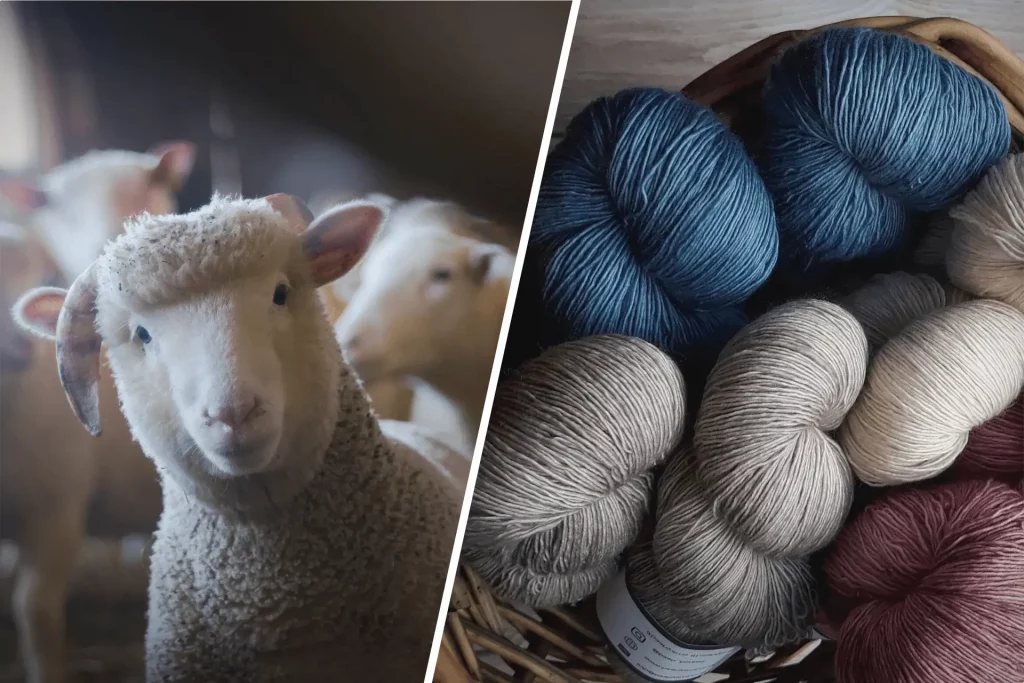
Sheep belongs to mountainous habitat, and as grazing animals, it mainly depends upon grass for their food. Female sheep are named ewes, males are known as rams, while little cute jumping creatures are called Lambs. And the term sheep flock is used for the group of seep.
We all know that there is little difference between wild sheep fur and domestic sheep’s hair. Wild sheep bodies are covered with a thick coat of fur, which naturally acts as a warm barrier between their bodies and the harsh cold weather of mountains.
Above mentioned thick coat contains long, firm hairs, known as kemps, which grow at the start of autumn and are mostly sheds in spring. But, these days, no more than 2% of the worldwide sheep inhabitants are wild sheep.
In the 12th century, merino wool was known as a magically unique fabric in Spain as it played the biggest role in keeping the people warm with great comfort and coziness. People of that time had limited clothes durability, and the soothing effect of this stuff against the weather was another reason for its fame.
It was so honored that selling merino wool to the other countries was liable to be punished by death! During the Napoleanic Wars in 1788, many merino sheep were moved to Australia and shortly grew to more than 2 million by 1830. During that era, merino wool was used in all outfits regularly.
Sustainability and Environmental Impact:
This is against nature to have so many sheep, destroying the natural food chain and webs. Overgrazing can also badly impact our environment. From different sources, it is shocking that almost 500 million sheep are killed annually around the globe.
As we already discussed, sheep material is biodegradable and, of course, far healthier for the environment. While considering post-consumer waste, synthetic products like acrylic, nylon, and polyester (not eco-friendly) are all different types of plastic, as these are non-biodegradable, so they take years and years to degrade if discarded.
There is no need to mention that these annoying microfibers are shed in machines during the washing process and discharged into waterways, while pure wool does not leave microplastics.
Like other synthetics, there is no involvement of a large number of crude oils also no need for chemicals during its production.
Due to anti-microbial and anti-odor capabilities, wool is considered a long-lasting natural fabric that requires frequent washing. Furthermore, this fabric doesn’t dump just in landfills because it can be recycled used for composting as it takes very little time to degrade.
However, there is always a grey side of each story, so the same is the case with wool’s sustainability; although the fiber is sustainable, mostly the damage comes from the raw material used.
When we talk about industrialized grazing of livestock, the first thing that comes to our mind is environmental degradation and land cleaning, ultimately a significant increase in methane gas emissions from a large number of cattle.
With this conventional farming use of fungicide and insecticide is obvious. Still, with proper practice and taking sensible measures, the adverse impact of sheep on the environment can be mitigated and even completely stopped. Raising sheep with regenerative farming practices can improve soil health and biodiversity and truly be climate and sustainable.
Why Merino Wool?
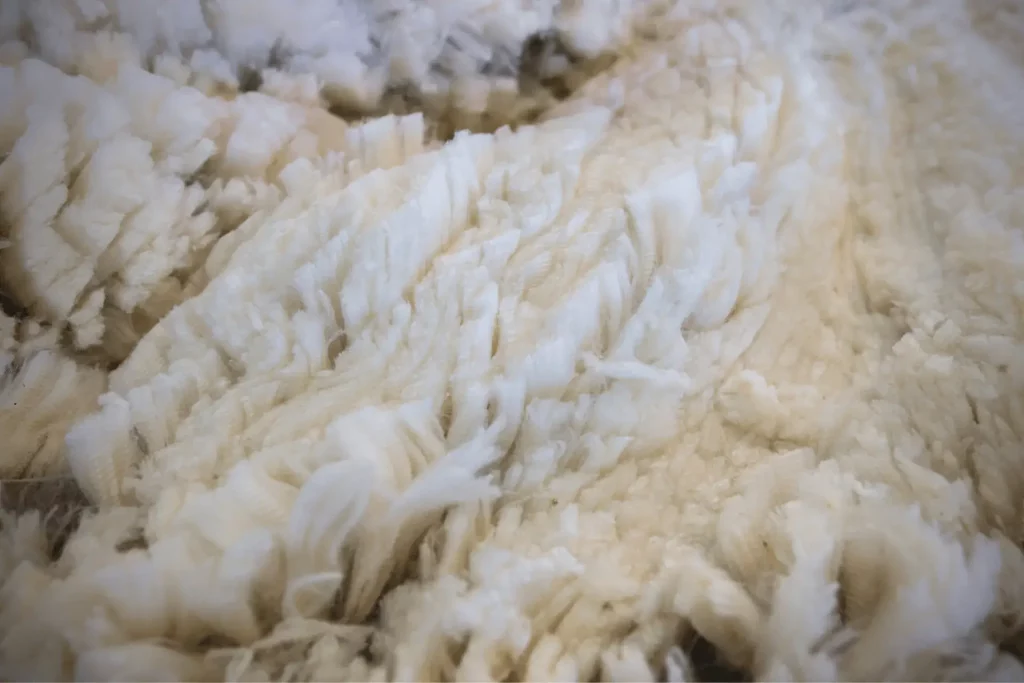
Now the question is, why do people love to wear merino wool? The answer is that this is impressive stuff to be used in winters and summers. Merino wool in summers: Ironic? Isn’t it? There is nothing to surprise at this because the answer is yes.
There is nothing more freshly to be worn in summer than Merino wool. It is comfy stuff, and you may be astonished to know that Bedouins have been using the stuff in the Sahara desert for centuries.
Have you ever seen a mud house in a village with a muddy roof made of natural insulation like dry grass and mud? If yes, you may also be aware that those mud houses are hot in cold weather while cool on hot sunny days. The same is the case with this woolen material.
Some Garments can hold moisture during hot summer against the body and decrease or completely stop the evaporation. Here comes the Merino wool, which works differently.
How? The permeability structure (having pores) of wool fiber make it very easy for sweat to move through the fibers due to the absorbency of the fiber structure.
Let’s have a look into the chemistry of this wool fiber. The exclusive composition of wool fibers is all about the interaction with the dissolved hydrogen in the water.
This produces consistency in surface tension due to which water can freely move inside the fibers, outward, upward, and sideways. Generally, we call this procedure “wicking,” which helps the wearer to feel cooler as dampness is wicked away from the body.
So, the chemistry of wool is dependent upon two main processes, i.e., absorption and desorption. It is now understood that wool actually absorbs the humidity, but in contrast with other kinds of stuff, wool can also release moisture from its fiber.
If we comprehend this, once the fiber of wool absorbs the sweat, moisture can be released, soothing the body with a cool effect.
We are clear that this high-quality natural fiber is the best source of a comfy and fantastic garment next to the skin with enormous benefits and people love this great fiber.
Let’s ignore our most wanted clothing comforts and raise a simple question: Is Merino wool ethical?
This is not as simple as it seems to be; there is a big concern associated with animal welfare and environmental issues. So, how sustainable and ethical is the collection of wool.
Ethical Concerns of Merino Wool:
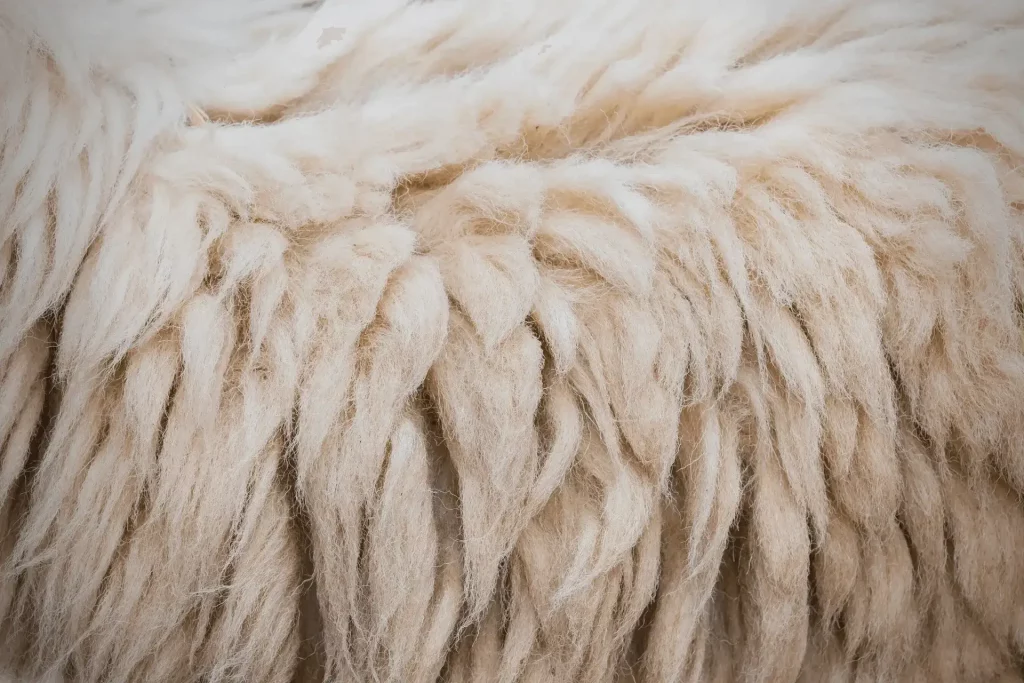
When it comes down to it, determining whether wool is ethical or not will be people’s personal opinion. But one thing is pretty sure that it is a renewable resource and because it is a natural fiber, obtained directly from living animals, made up of completely natural materials.
Furthermore, it can prepare sustainable sweaters shoppers, which can be used for the compost industry. It is a quick biodegradable material, and Processing requires a minimum of chemicals.
Animals, on the other hand, are involved in wool production. While they may be considered “renewable resources,” many people do not see animals as raw materials. Still, as soft, emotional beings who deserve our love, attention, and justice, too – just like any other creatures on this globe, a craze we can belong to.
Each type of wool (i.e., each type of animal) is associated with different issues when it comes to ethics—depending upon the type of sheep species, different types of wool are obtained, which is linked with diverse ethical issues.
Should Sheep Be Shorn?

As discussed in the history of sheep over, 98% of sheep inhabitants had been domesticated for wool production. The rest of the 2% of sheep has to shed their hair naturally.
Regular shearing of fur is essential to sheep’s health. Some people suggest that wool be left to grow on domestic sheep, which is quite strange because it can lead the animal at health risk due to discomfort by overheating and any skin diseases and growth of parasites on the body.
Overgrowth of wool on sheep’s bodies can cause hindrance in its movement. With dense grown wool can also cause blindness in sheep that impairs the animal’s vision, and for the survival of sheep, its good sight is very important to escape from predators.
If regular shearing is ignored, sheep become so heavy that they cannot move with their flock for protection or running from predators. Shearing of wool is also important for the survival of lambs, specifically in thick long-coated breeds, as lambs need to be fed quickly.
But this is so heartbreaking that lambs can die with too much wool, and they can’t feed due to starvation. So from the above discussion, it is quite clear that sheep need to be shorn.
Extraction of Wool From Sheep Body:

The process of extraction of sheep wool is known as sheep shearing. In this process woolen fleece of sheep is removed from its skin while the shearer is the person who cut off the wool. Usually, every fully developed sheep is shorn once a year.
Sheep can shear in almost all weather conditions, but mostly it is avoided in cold, harsh weather because this can keep them warm, especially the younger animals.
As we know, the shearing of sheep is very older, so there are so many processes to cut off the wool, which are developing with time. The process can be done with a blade and manual razor or with the help of specially designed clippers. The method of cutting-off is as painless as a simple haircut done with care.
A mechanical clipper known as a headpiece is used to shave the sheep. Moreover, there are various treatments and concerns for sheep in shearing, which depend upon the shearer and the farm.
Merino Wool Cruelty:
Following are some cruel methods of wool removal processes:
Innocent animal sheep naturally refuse to accept the shearing process and resist it like our little Persian cats and cute pets like tiny Shih-Tzu dogs. While treating our pets, we are more concerned not to hurt those.
But on the other hand, these innocent creatures are sometimes shorn so forcefully to stop their movement, which eventually hurts badly and traumatizes the animal. Some footage has been captured of those cruel shearers hitting and kicking the sheep to keep them calm and still.
As we all know, those are paid for the weight of wool collected, not by the time they took to shear it off. Their main concern is to get maximum wool in a single day.
Sometimes they shred 100-400 sheep in a day. There is great competition in the production industry, which puts pressure on them to do this work carelessly, eventually harming the animal.
If the sheep’s body wound is accidentally created during the shearing process, those were sometimes sewed without giving any anesthesia, which causes the worst paint to the poor animal.
This is only one side of the picture:
The experts with decades of experience do the shearing with great care and time without hurting the animal. The trouble with wool is that there is little or very little knowledge and transparency for clients to know how the wool they have on their body keeps them warm is obtained.
Mulesing Practices:
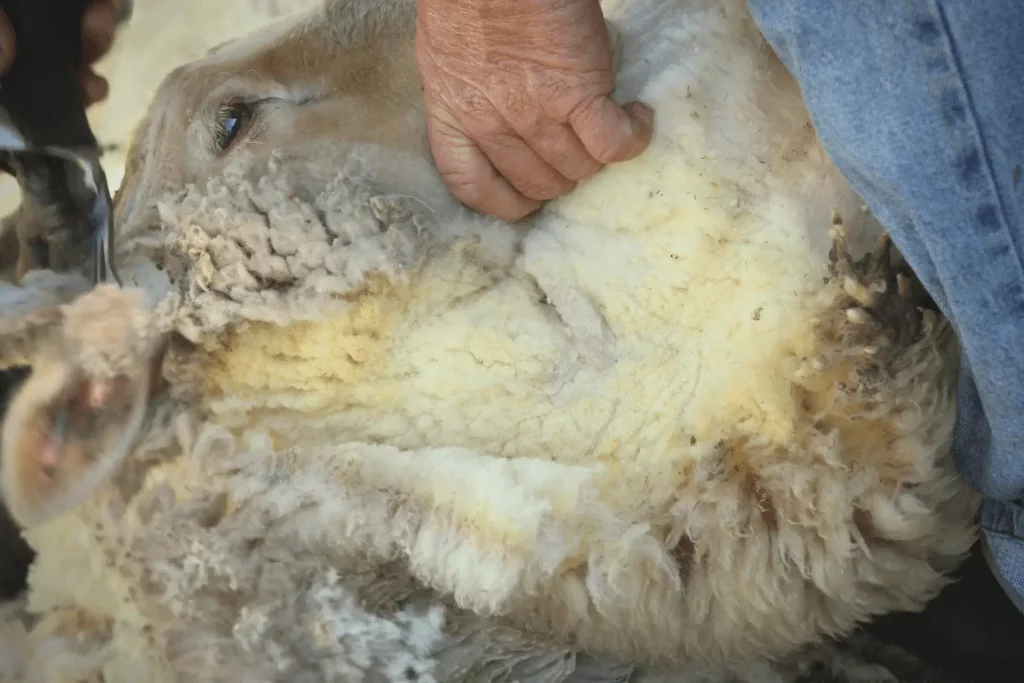
If you have ever seen merino sheep, you can easily imagine how dirty those are, particularly at their back. Mostly feces, urine, and other waste material are stuck to their back full of thick fleece, which may cause infection into their body.
Flystrike is the top known parasite that affects these sheep badly. This is one of the pinnacle parasites that affect the health of poor animals and the quality of wool.
To struggle with the above-stated parasite, many farmers adopted the practice of mulesing, which is an ethically- indistinct practice.
This is a difficult and painful process in which the portion of their skin is surgically cut off from the body without any anesthesia or painkillers. Another drawback of mulesing is that no more wool is produced on that particular part which ultimately reduces the chance of fleece production.
Merino Wool Certification:
In New Zealand, there are some of the best animal wellbeing values internationally, and the animal welfare act of this country is strictly made mulesing an illegal act. The lifetime anxiety and stress of sheep can be reduced by choosing free-range, hand-shorn animals. The same is the case in the UK. Mulesing is banned there too.
Now, as there are numerous laws available globally, brands should have made their supply chain transparent for their customers that how the wool is collected and transported.
If there is no such practice considered, this is nearly impossible to know how consumers are treating the animals and will not be able to choose brands wisely.
For this purpose, there are a lot of internationally standard accreditations and certifications available that offer third-party authentication through regular audits for ethical wool production.
Some of those are as follows:
- Responsible Wool Standard (RWS),
- Certified Animal Welfare Approved,
- Certified Humane® Label,
- Certified Organic Wool,
- the ZQ Merino Standard,
- Soil Association Organic Standards
- Climate Beneficial by Fibershed.
Brand Offer Ethical Wool:
Several brands obtain merino wool from sheep with high ethical values and openly refuse to injure the sheep. Jointly we can raise the demand of buying from those companies which show the transparency of their standards and obtaining process of non-mulesing wool.
The name of a few brands are as follows:
- Duckworth
- Mons Royale
- Smartwool
- Finisterre
- Fjallraven
- Ortovox
- Icebreaker
Sustainable Alternatives to Merino Wool:
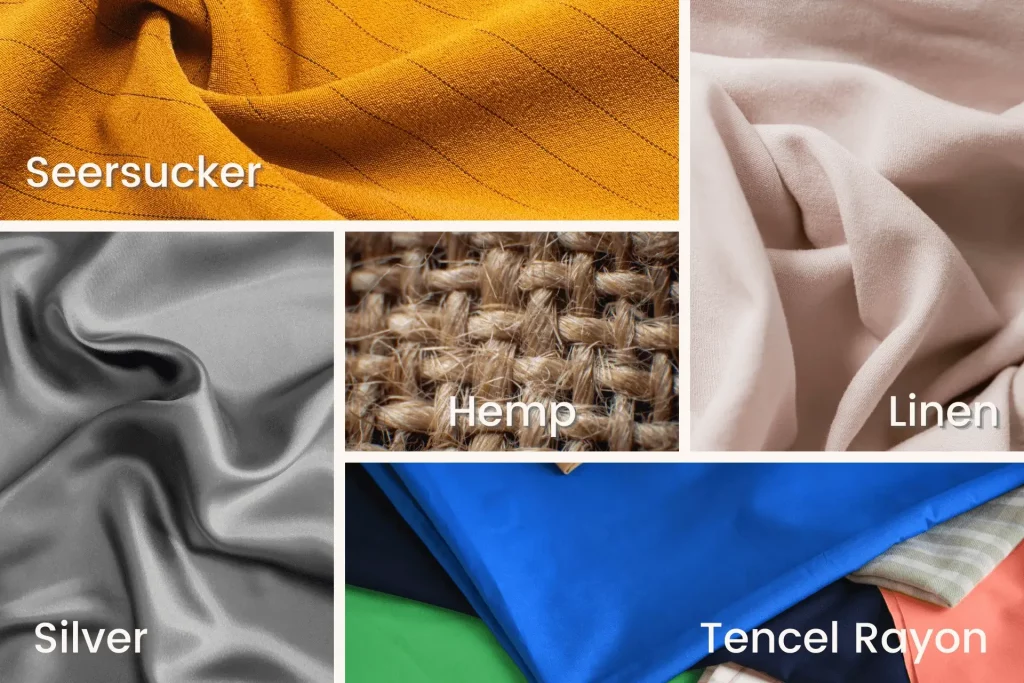
Not all but a few of the alternative fabrics to merino wool are as follows:
Linen
As Linen is quite thin and its fiber is very absorbent, the garments of Linen give a cooling and fresh impact to the skin. This amazing fabric can absorb a good amount of moisture without feeling wet.
Seersucker
Another fabric suitable to warm is another cotton weave best suited for a humid atmosphere. Several robes, shorts, and shirts are made up of this stuff.
Hemp
Hemp is a very long-lasting and eco-friendly material that can block ultraviolet radiation. Although it lacks the ability of anti-microbial activity like wool, this is non-irritating stuff.
Ramie
The durability and strength of the garment made up of Ramie textile are well known. There is shine in the stuff and can hold iron for a long time and diminish wrinkles. However, due to the refinement process and complex extraction, Remie is very expensive.
Modal
Another alternative and sustainable stuff are Modal, which is made from beech trees. It is famous for its softness and blanching ability. This fiber is also pretty porous, which gives a very fresh feel to the skin.
Silver
Other than wool, this fabric can also prevent microbial activities while keeping it odor-free for quite a long time. Mostly this stuff is used as evening wear in cold weather in functions.
Tencel Rayon
Tencel is a wrinkle-free fabric with absorption and is famous for its softness. Although Tencel is not porous like wool, it is durable and environment friendly.
Frequently Asked Questions:
Does merino wool hurt the environment?
Merino wool is an eco-friendly and recyclable natural fiber that acts as an insulator to regulate temperature. As you would expect, the softness of merino wool is very easy to wear, keeping the body relaxed in any weather.
Can merino wool be ethical?
Luckily, merino wool is usually imported from New Zealand, which, we already mentioned, has much higher ethics for animal wellbeing. Yes, we can have real ethical merino wool, but we have to do good research for that before buying it.
What is a sustainable material?
Off-course, it can be produced organically and is a renewable, recyclable, and biodegradable material. Now there are a lot of international animal welfare standards, which made tracking the production is very easy. Considering its performance in all weather conditions, this is a miracle fabric.
What is ethically sourced wool?
Ethically sourced wool means there are few limitations and commitments internationally, e.g., the farmers who are providing wool are must not be engaged in any animal cruelty.
Can wool be recycled?
Wool can easily be recycled with well-established pathways. Prato, Italy, is a familiar hub for the recycling of wool. A study shows that woolen products are long-lasting and can be used and reused for 20 to 30 years or even more.
Conclusion:
Merino wool is one of the oldest fabrics used in history, and I still love to use it. This amazing stuff is very comfy to skin and can be used in summers and winters because of its chemistry and fiber.
In old times people loved its durability as they perhaps no other option to wear, but nowadays, in this revolutionary era where everything is disturbing our environment and depleting natural resources, people are concerned about Ethics.
People are raising questions about the laws of wool collection and the transparency of brands that offer wool stuff. So, fortunately, this material has been environment friendly, biodegradable, compostable, and recyclable for many years.

